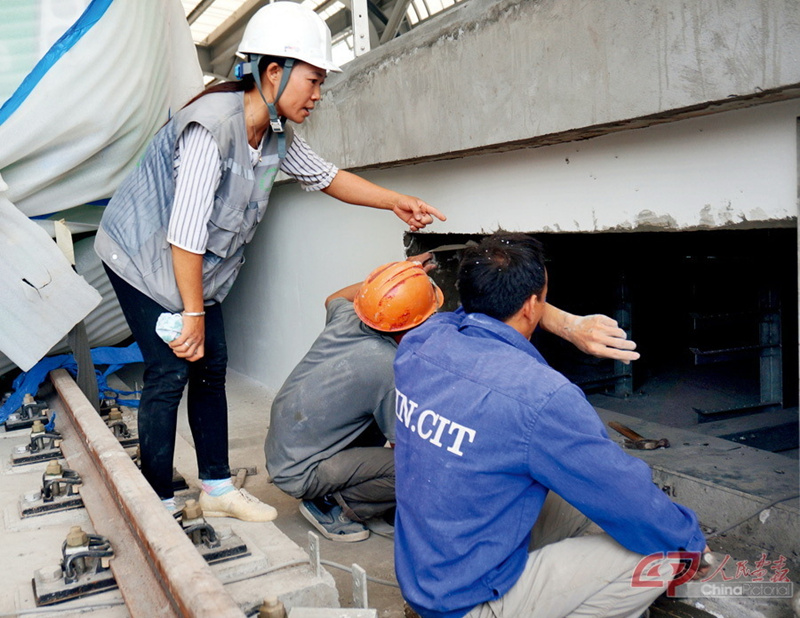Fast Train in Vietnam
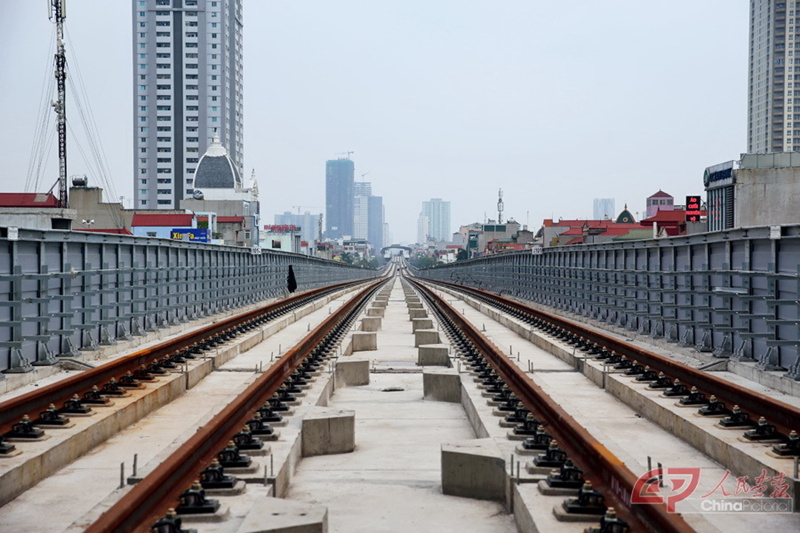
Despite temperatures exceeding 33 degrees Celsius (91.4 degrees Fahrenheit), construction work buzzed in late April in Hanoi, Vietnam, at the site of the La Khe station on the Cat Linh-Ha Dong urban railway. Patiently waiting there, ready to work, was the first train made by China for use in Vietnam.
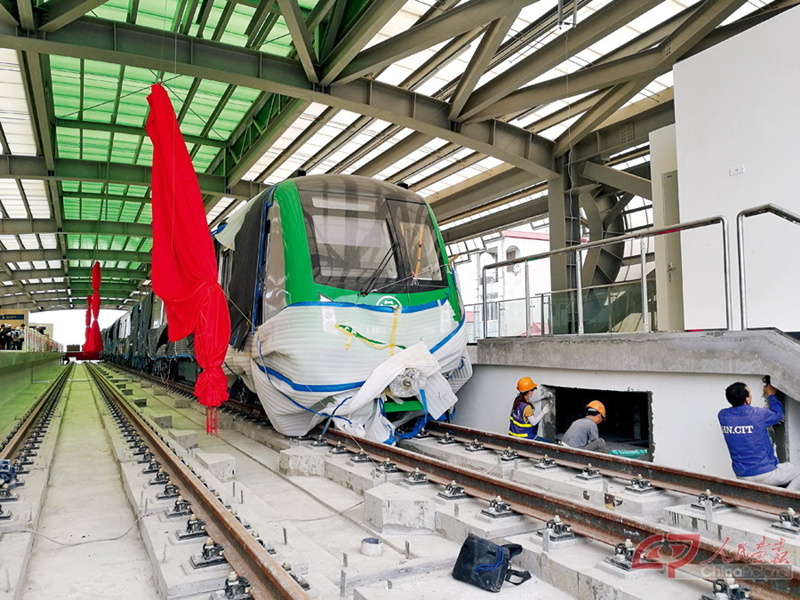
Stretching some 13 kilometers, the Cat Linh-Ha Dong rail line was designed to allow trains to run at 80 kilometers per hour. With a total investment of US$850 million, the project was contracted by China Railway Sixth Group Co., Ltd. (hereinafter Sixth Group) under the China Railway Engineering Corporation (CREC) and built to meet Chinese technological standards in design, manufacturing, material supply, and services.
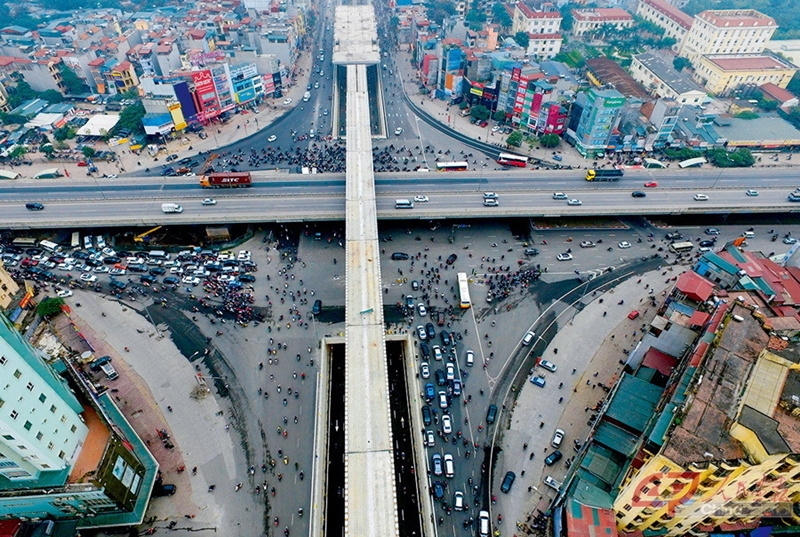
“The La Khe station is a template for the entire Cat Linh-Ha Dong railway system,”explains Sun Dezhi, deputy general manager of the Sixth Group. “It marks the final stage of the project. It will open to the public soon after its trial operation at the end of 2017. As the first urban rail transport project in Vietnam, it has set a good example for potential cooperation between Beijing and Hanoi. When it officially begins operation in the second quarter of 2018, the rail line will be able to handle 13,400 passengers per hour. Its total capacity could reach as high as 23,200 passengers per hour in the future, which would greatly alleviate traffic pressure in downtown Hanoi.”
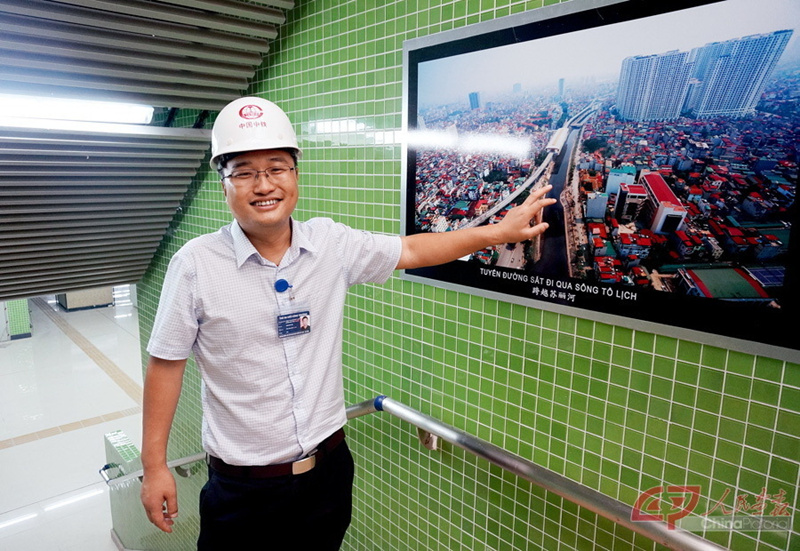
From Skepticism to Recognition
Accelerated urbanization has created traffic growing pains in Hanoi, which has a population of nearly 8 million. According to Deputy General Manager Sun, the decision to construct the Cat Linh-Ha Dong rail line was made in October 2003 when Nguyen Tan Dung, then First Deputy Prime Minister of Vietnam, visited China and experienced urban rail Line 2 in Dalian, Liaoning Province. Construction didn’t commence until October 2011.
The project has drawn great attention from both countries’ governments and related departments, but triggered concerns on issues such as energy-conservation measures in uphill and downhill departure designs. “Nothing happened with our design until Vietnamese experts fully backed it,”Sun adds.
Early on the morning of February 19, 2017, the first Chinese-made light rail train arrived in Hanoi; and it was hoisted onto the track at 11:00 p.m. the next day. “Despite the drizzle, the spectacle drew hundreds of spectators from Hanoi,”recalls Sun. “Installation was completed amid warm applause and cheers by 3:00 a.m. The entire process was broadcast live on television.”
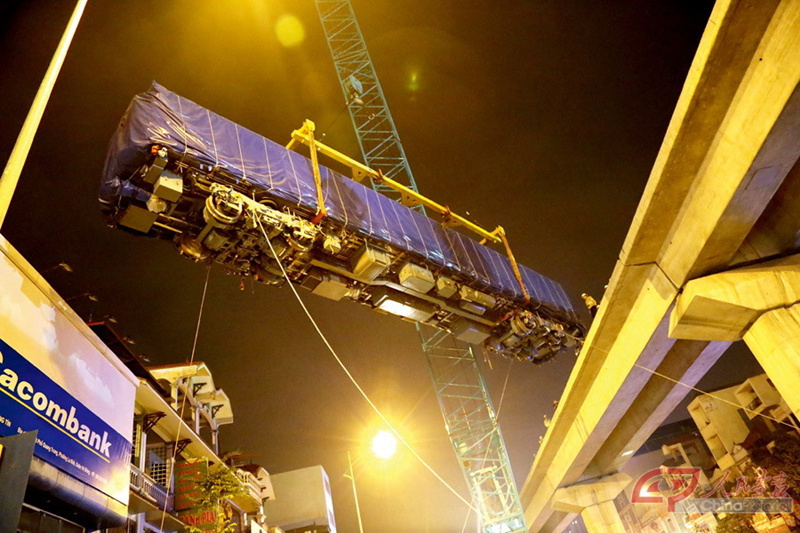
The project, which passed through complex topography, was complicated to say the least. The line winds around residential areas, rivers, lakes and, of course, bustling downtown Hanoi. But as the first of its kind in the country, the plan proceeded, which resulted in trailblazing communication between the Chinese builders and the local authorities. The process of learning to communicate took quite a while, during which time efficiency was poor. “We wasted about 60 to 70 percent of our energy talking,”Sun sighs.
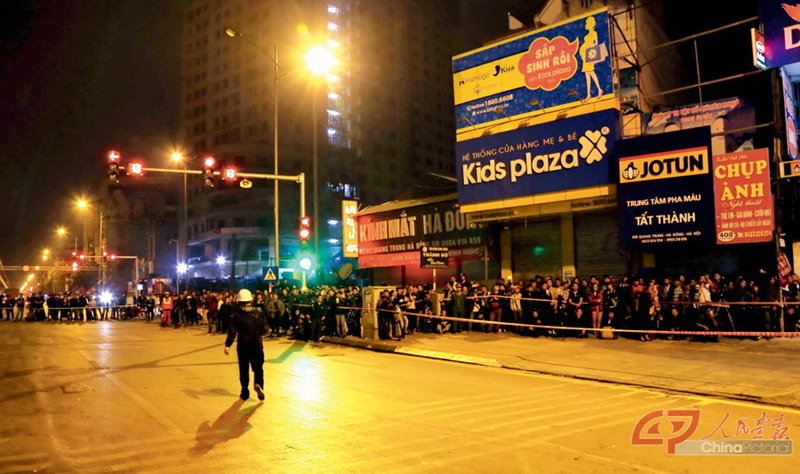
Committed to meeting the deadline, the Sixth Group forged ahead. “As scheduled on August 3, 2015, we must begin operation by August 2018,”Sun notes. “Today, construction is essentially complete. We’re starting trial operations at the end of this year. We are sure it will be open to the public by the second quarter of 2018.”
Among the three light rail projects launched in Hanoi, the Cat Linh-Ha Dong line was the last to be approved, but the first to commence construction, and it will be the first to open. The other two, Line 1 and Line 3, which are being built by Japanese and South Korean contractors, respectively, have yet to begin construction although the Line 1 project was approved as early as 2004.
“They cannot break ground until every relocation is complete,”explains Sun. “We worked overtime to move each piece forward soon after each relocation, which accelerated the process.”
Best Equipment and Technology
It was originally planned that construction of the light rail should start with a rail yard, which was designated to be located over a pond of mud more than 10 meters deep. The Sixth Group wasted four years pleading with the owner to treat the soft foundation, which would prevent sinking. Eventually, the relevant Vietnamese government department sided with the landowner, but pledged to take responsibility for any future problems. Seeing no alternatives, the Sixth Group reinforced the pipe ditch as solidly as possible with the best available materials in Vietnam to reach standards to withstand an 8.0-magnitude earthquake.
Construction of the light rail has created many job opportunities for locals. According to Sun, more than 600 workers at the construction site are local, and the number once peaked at 2,400 in 2016. The Sixth Group has invited the best technicians from China to lead the work. Over the last six years, Chinese engineers have trained 7,000 Vietnamese workers.
The Sixth Group has delivered far more than just construction. Last year, it donated 3 billion Vietnamese dong (about 1 million yuan) to build bridges in Vietnam’s poverty-stricken mountainous areas.
Moreover, employees from both sides get along well. “It’s like a big warm family,”says an interpreter from Vietnam. “We work like brothers, helping each other.”
The Sixth Group’s performance has been highly praised by the Vietnamese government. A total of eight light rails are planned for Hanoi, with a total length of 305 kilometers. The Vietnamese government has already talked to the Sixth Group about the next project after the Cat Linh-Ha Dong rail line.
“We have faith in the quality of work on light rail projects under the Belt and Road Initiative,”says Sun. “We are using the best available equipment and technology to build light rails in Vietnam.”
